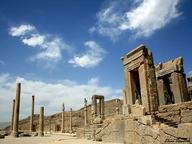Quiz Answer Key and Fun Facts
1. Cuneiform is the oldest known form of writing. Which civilization in ancient Mesopotamia was first to use cuneiform?
2. Which of the following languages was found on the Behistun Inscription?
3. Which great Persian king was the author of the Behistun Inscription?
4. One of the figures carved near the top of the Behistun Inscription is connected with Zoroastrianism, which was the state religion of the Persian Empire. What spirit is considered to be their highest spirit of religion?
5. The Behistun Inscription appears to be in a rather remote area. Why would the ancient Persians decide to display it in this place?
6. Which language on the Behistun Inscription was the key to the decipherment of cuneiform?
7. Several people worked at translating the Behistun Inscription. However, which of the following listed was an Englishman who became interested in the Inscription after being assigned to the forces of the Shah of Iran in 1853?
8. What type of information was found once the Behistun Inscription was deciphered?
9. Which ancient historian, called the "Father of History", inadvertently aided in the decipherment of the Behistun Inscription?
10. To which country would one travel today to see the Behistun Inscription?
Source: Author
ponycargirl
This quiz was reviewed by FunTrivia editor
bloomsby before going online.
Any errors found in FunTrivia content are routinely corrected through our feedback system.

